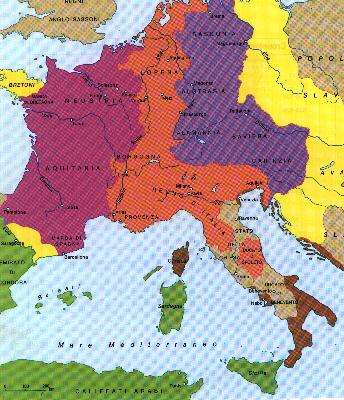With the dismemberment of the Sacred Roman Empire a new period of political disorder started, since the lack of a solid central government determined continued struggles and rivalry among the great feudatories. This political anarchy disrupted the three reigns of France Italy and Germany. In this period, the kingdom of Italy was shared among many feudatories, landlords of marches and counties that contended for the title of king of Italy. In particular, Ivrea was the chieftown of a great "marca", set up in 888 that included practically the whole Piedmont. In 950 Berengario II, marquis of Ivrea would get the better of the other Italian feudatories and became King of Italy. Meanwhile Ottone I became king in Germany in 936. He wanted to reconstitute the Holy Roman Empire and stretched more and more the boundaries of the kingdom of Germany. |
|
In 951 he came to Italy, defeated Berengario and
therefore, the feudatories of Northern Italy became his vassals. In 962 Ottone was crowned Emperor of the Sacred Roman Germanic Empire. An important initiative of Ottone I was to entrust the feuds to the Bishops (Bishops-counts): In this way, the support of the church was granted, but, above all, it prevented the feuds from becoming hereditary. The Italian lay feudatories were strongly in contrast with the policy of the German Emperors : the bishop –counts had more authority and privileges than the small feudatories and, since the Kingdom of Italy had been annexed to the empire, it lost its independence. |
|
